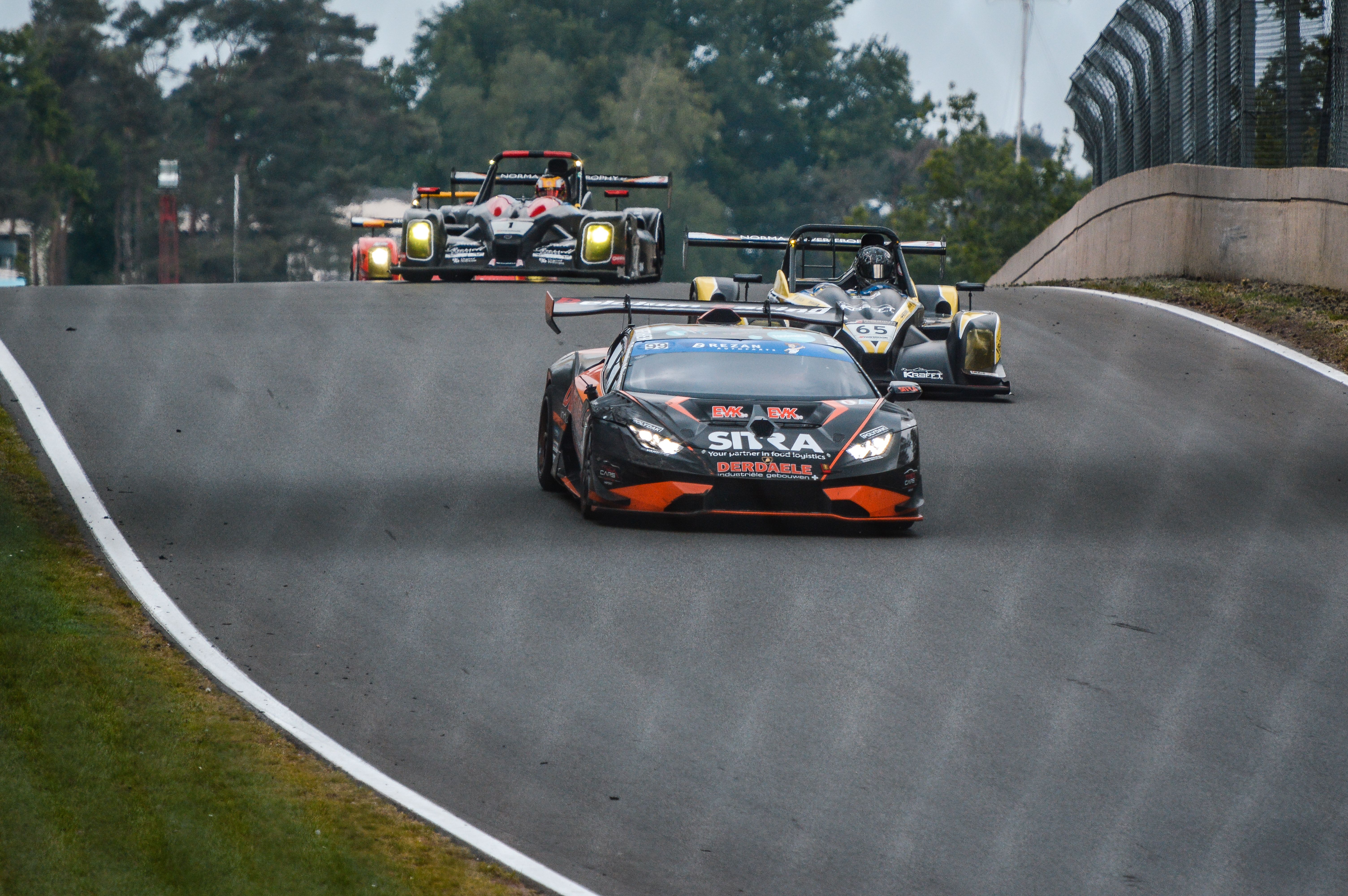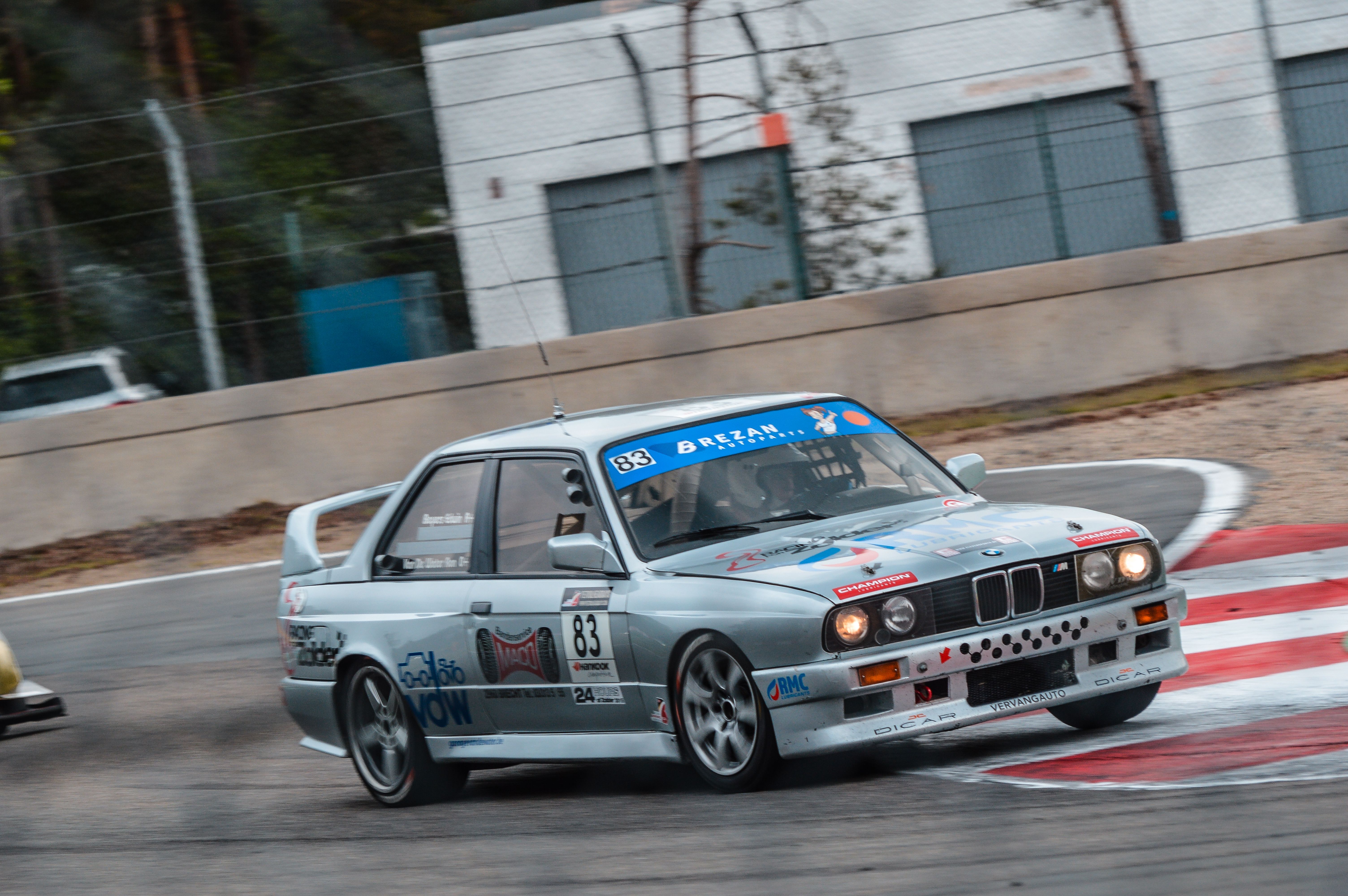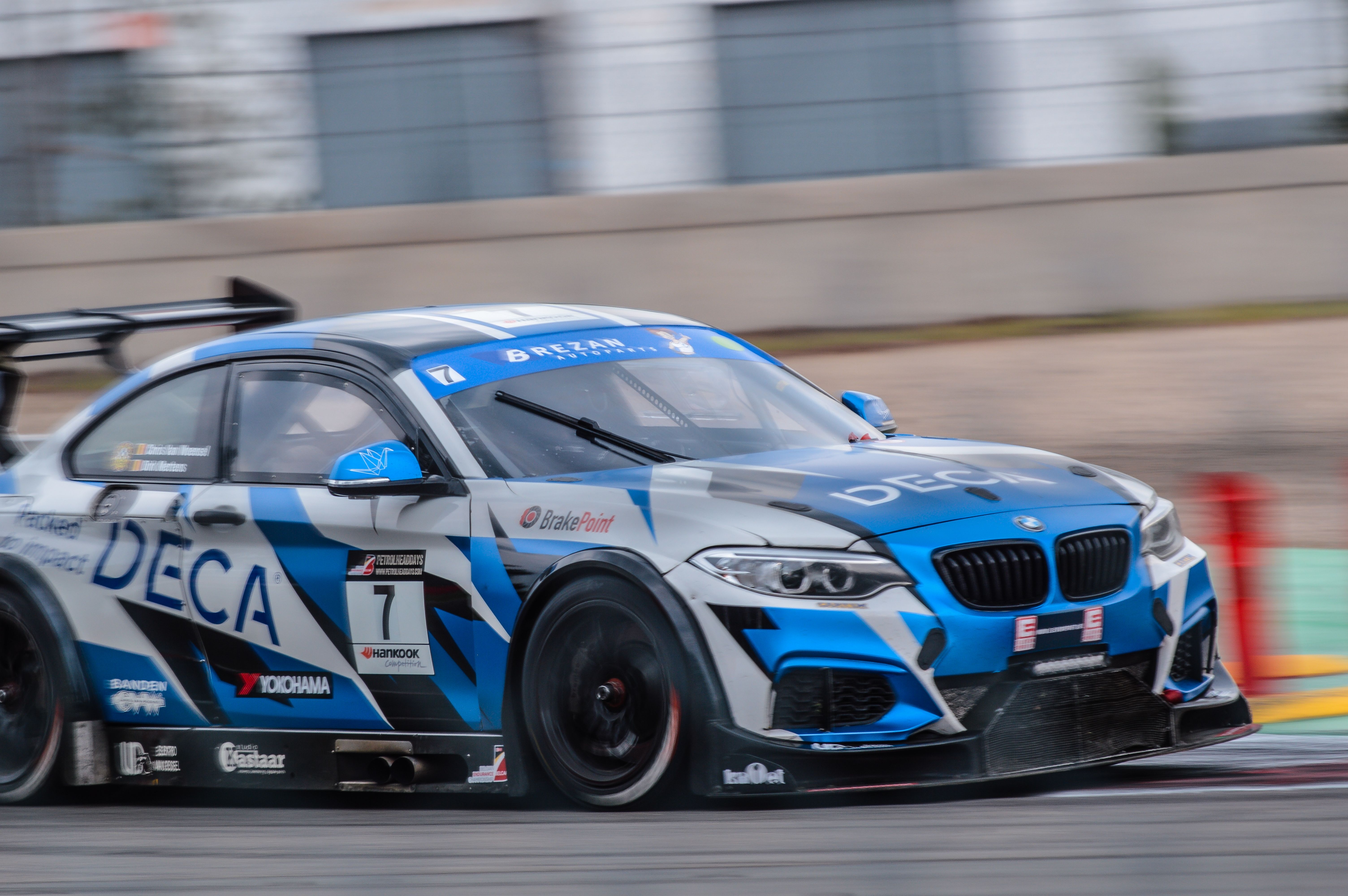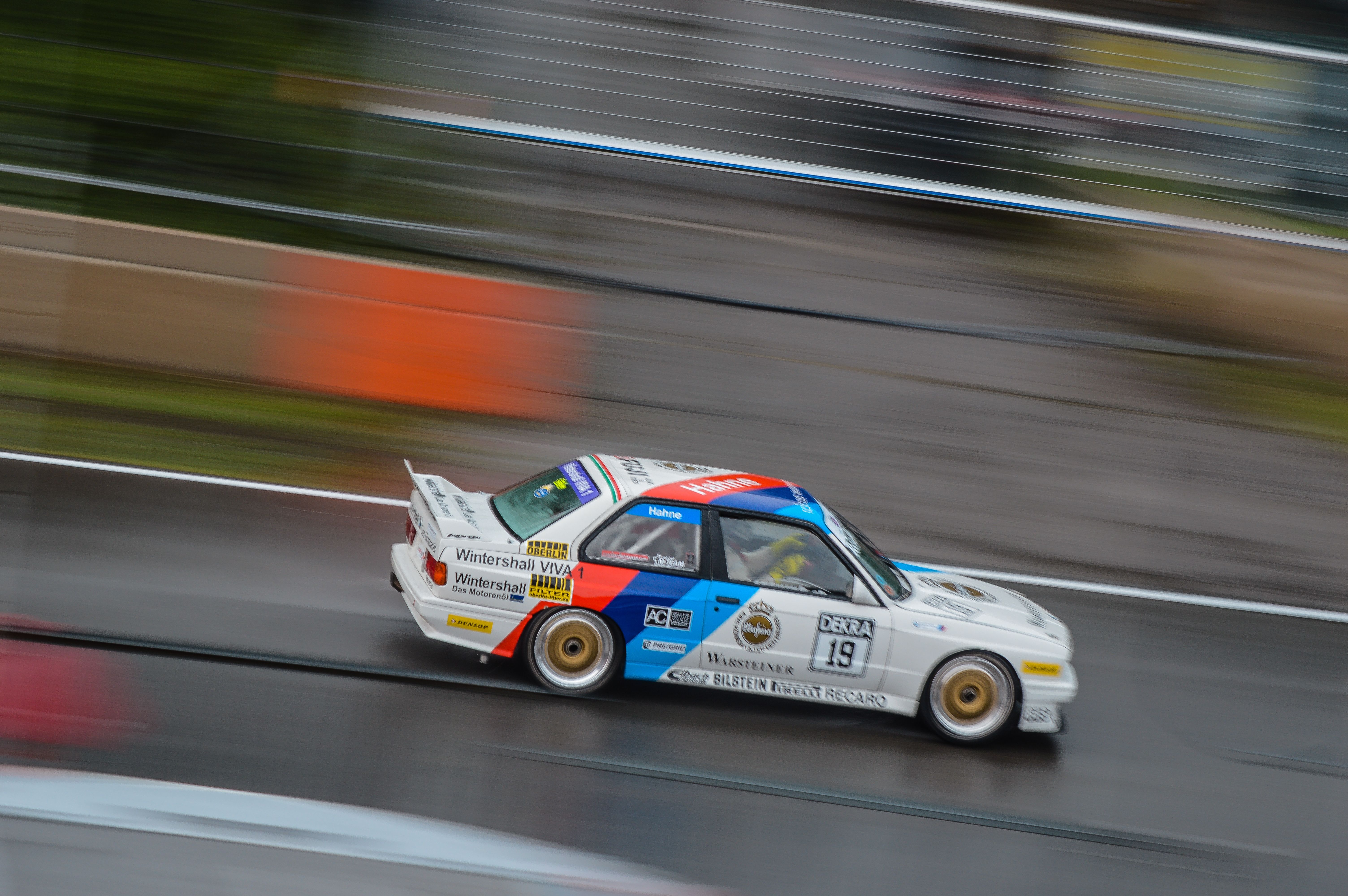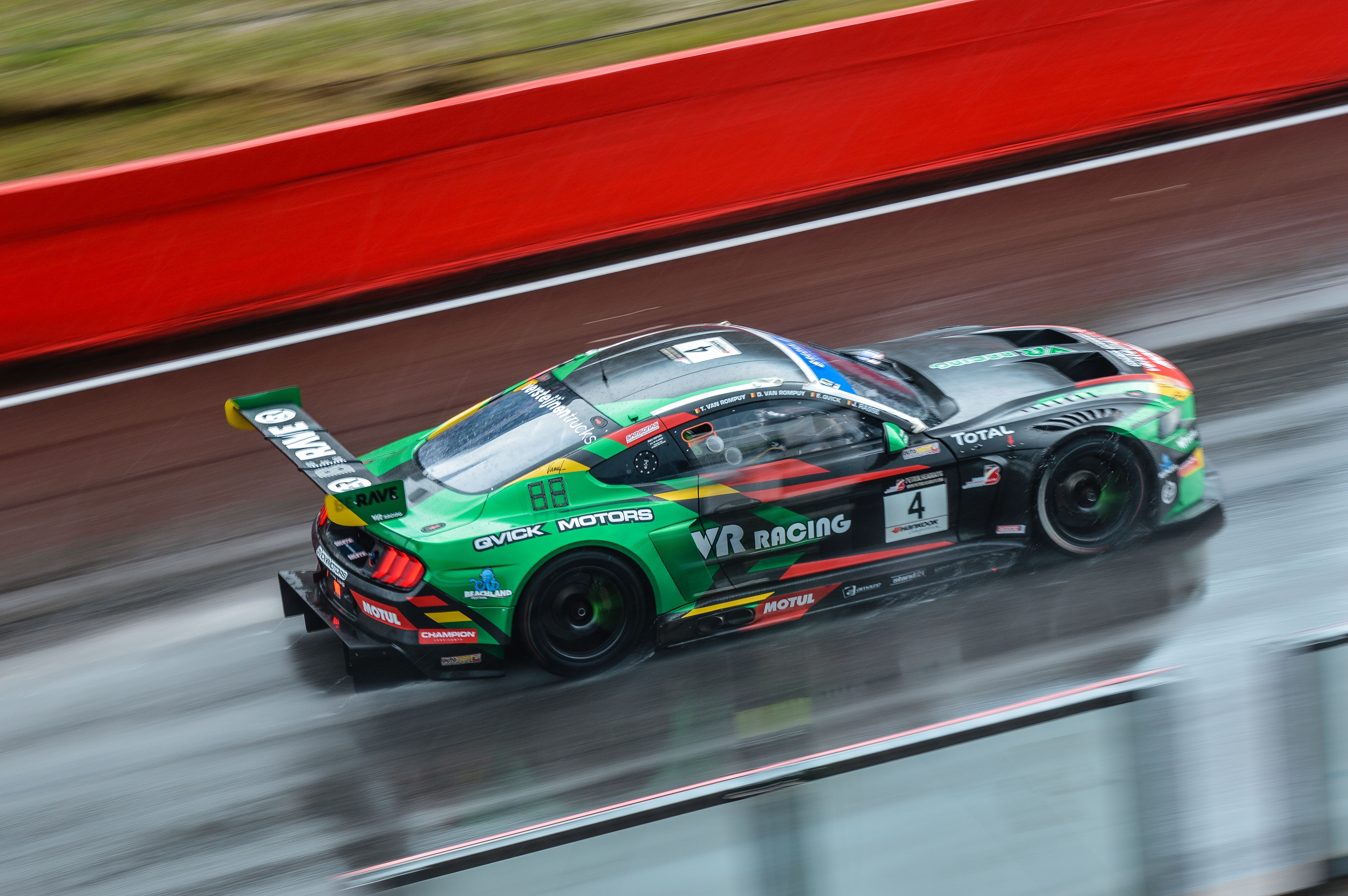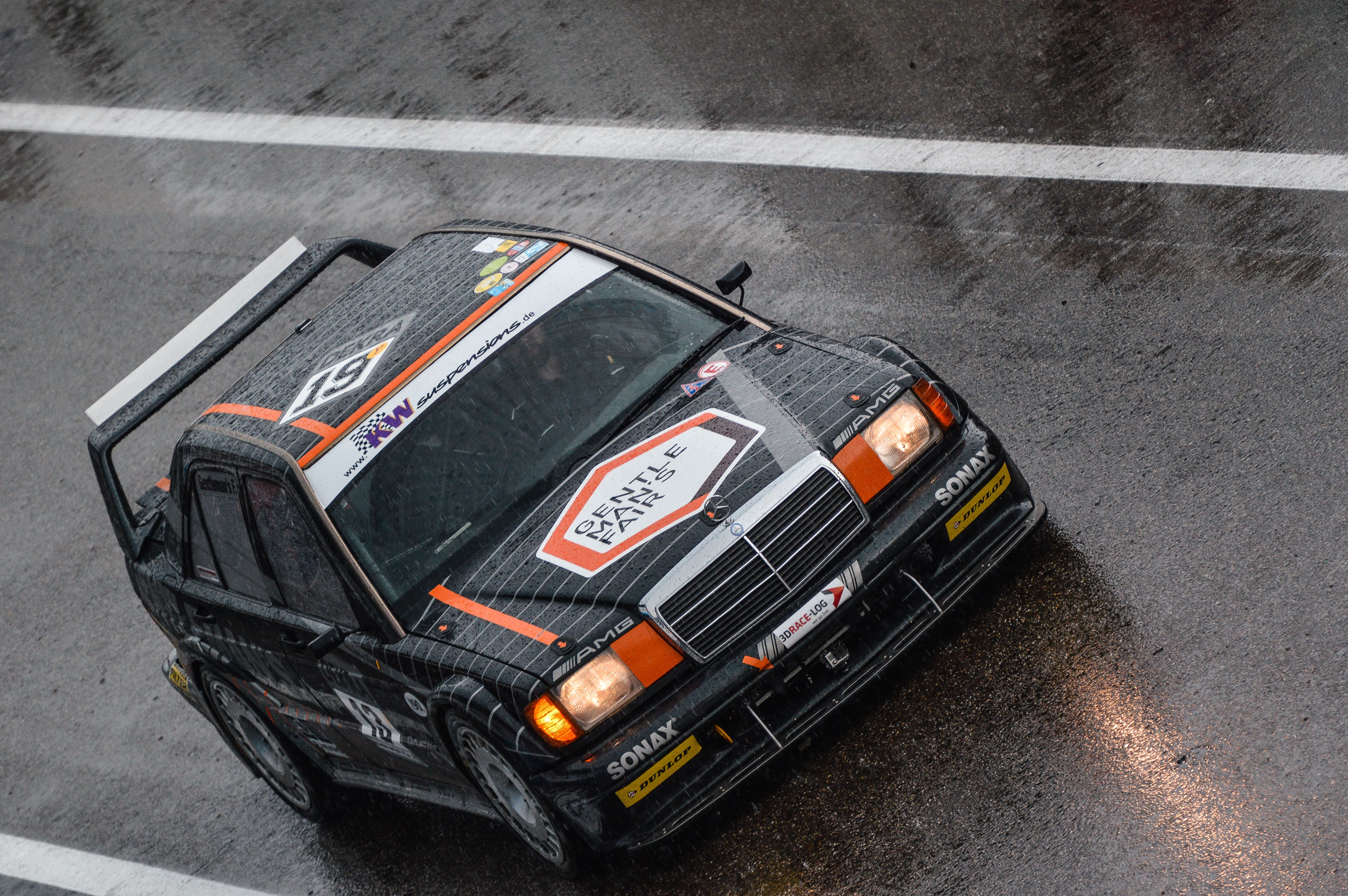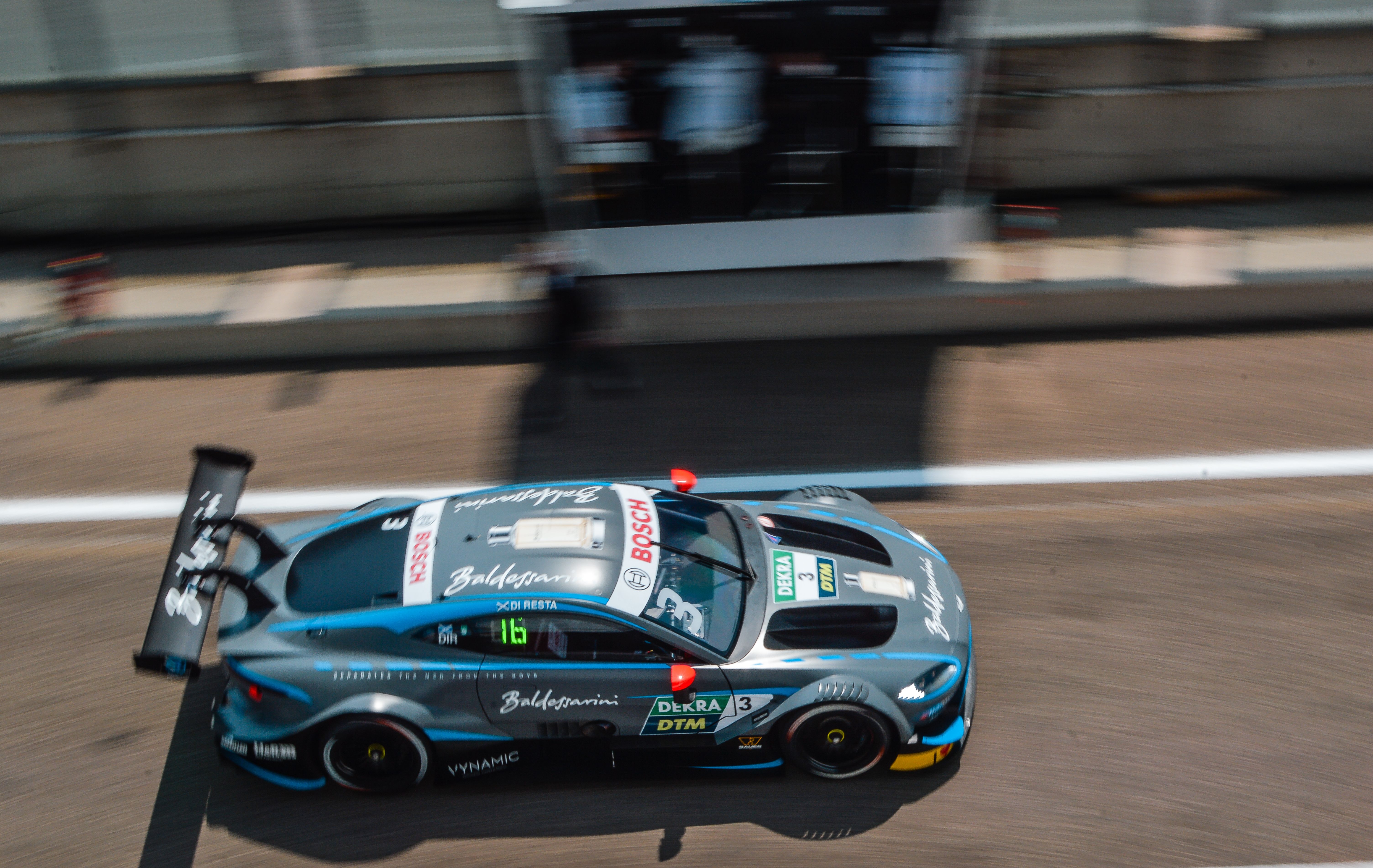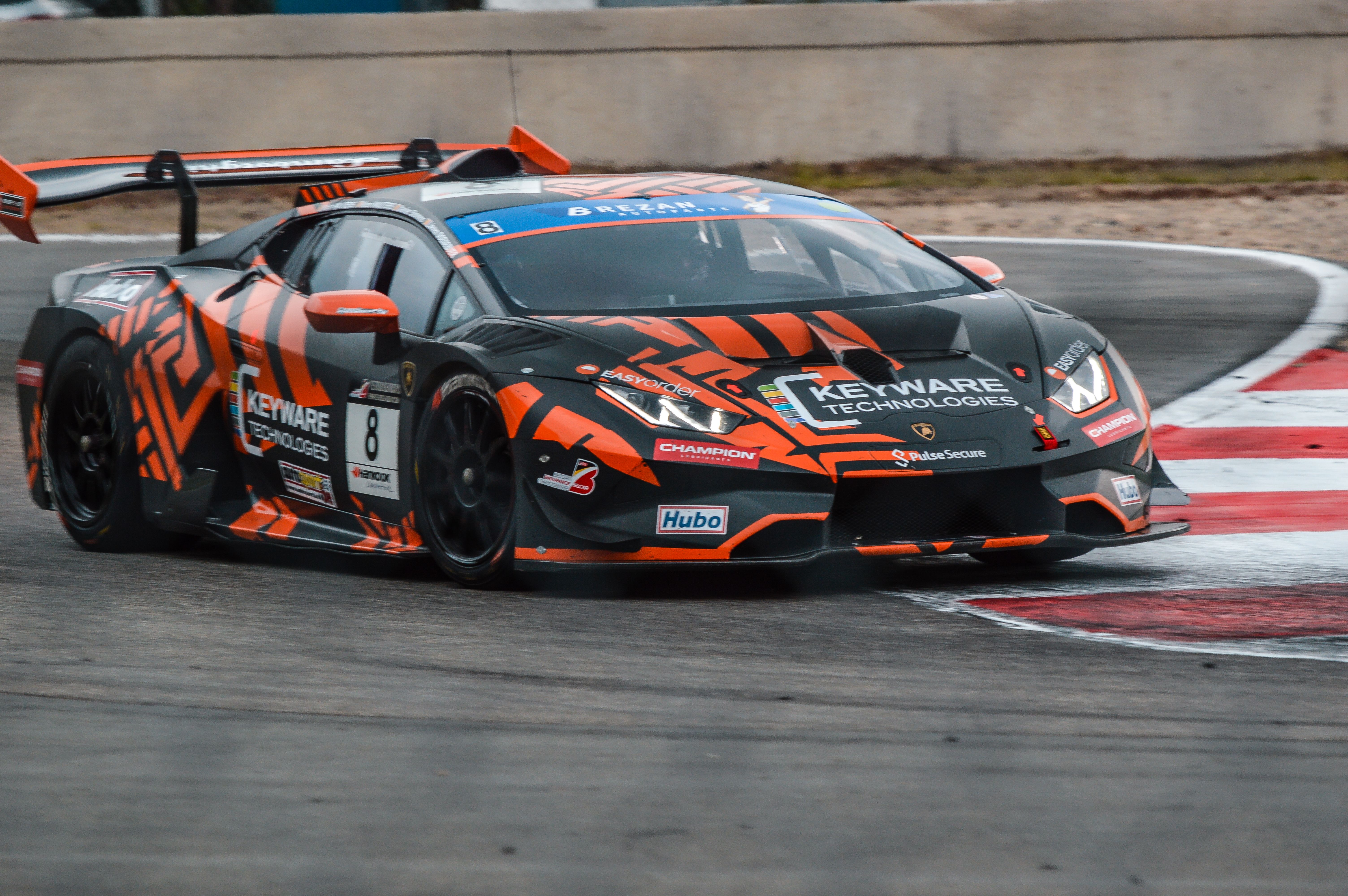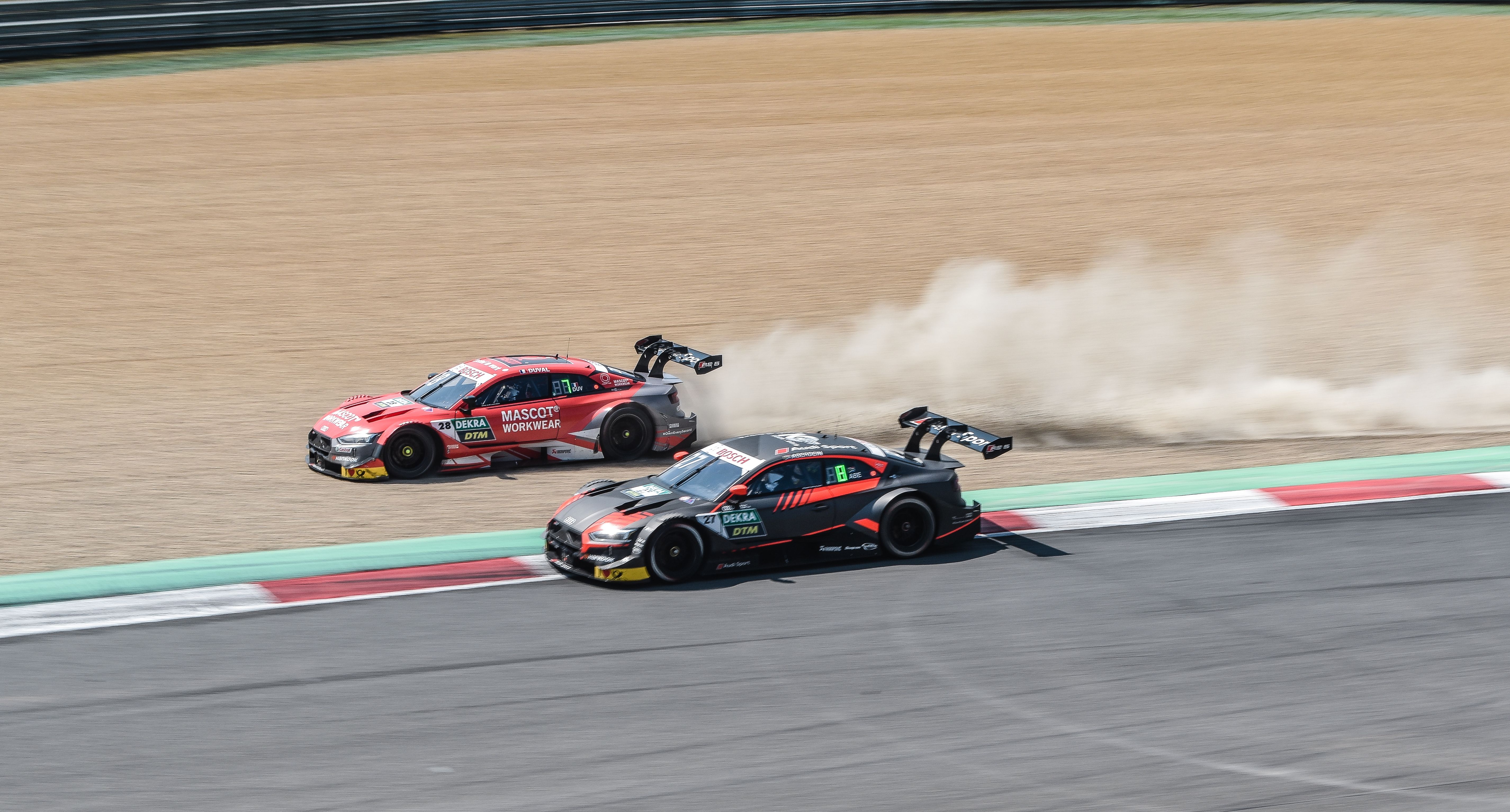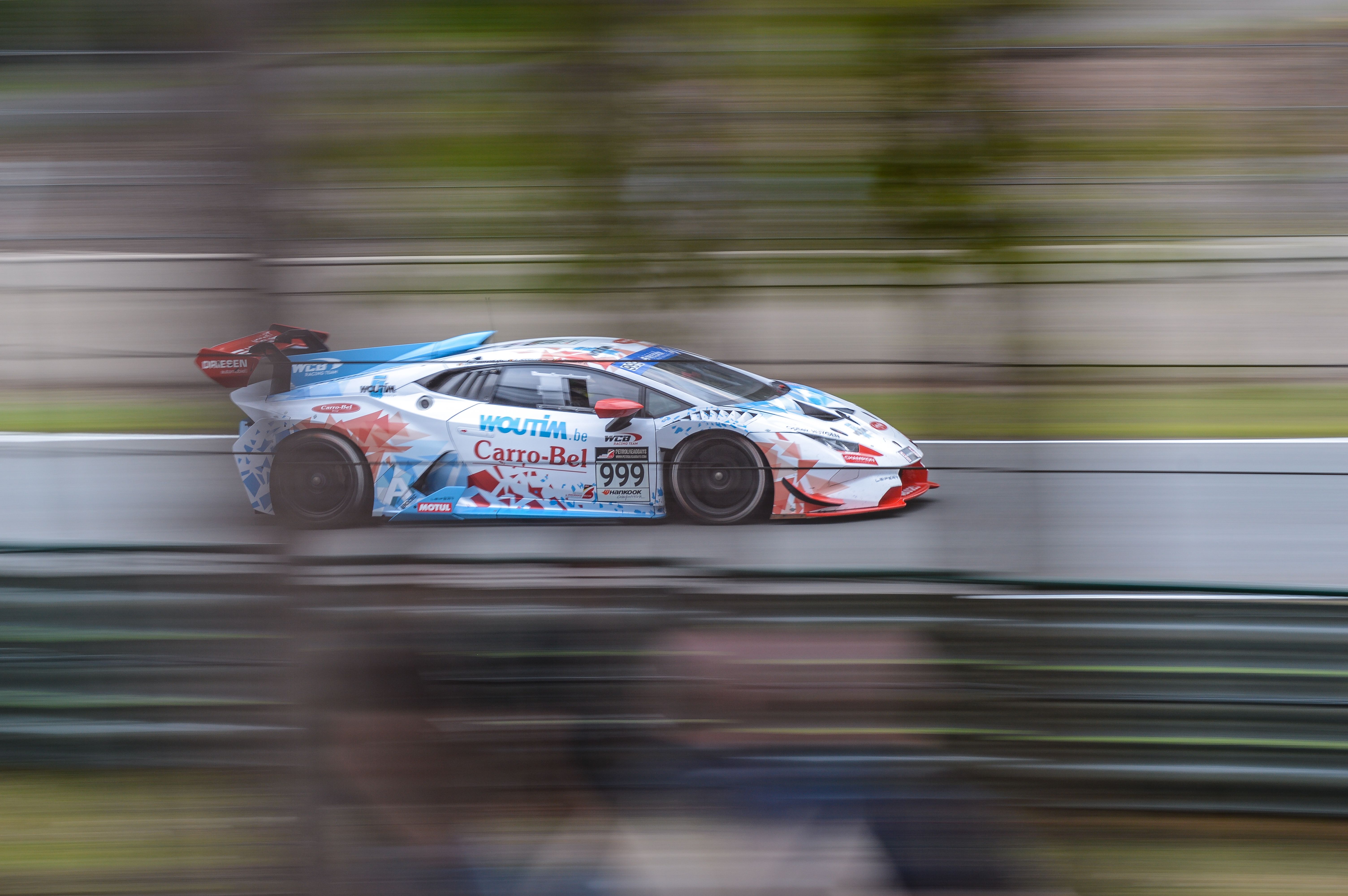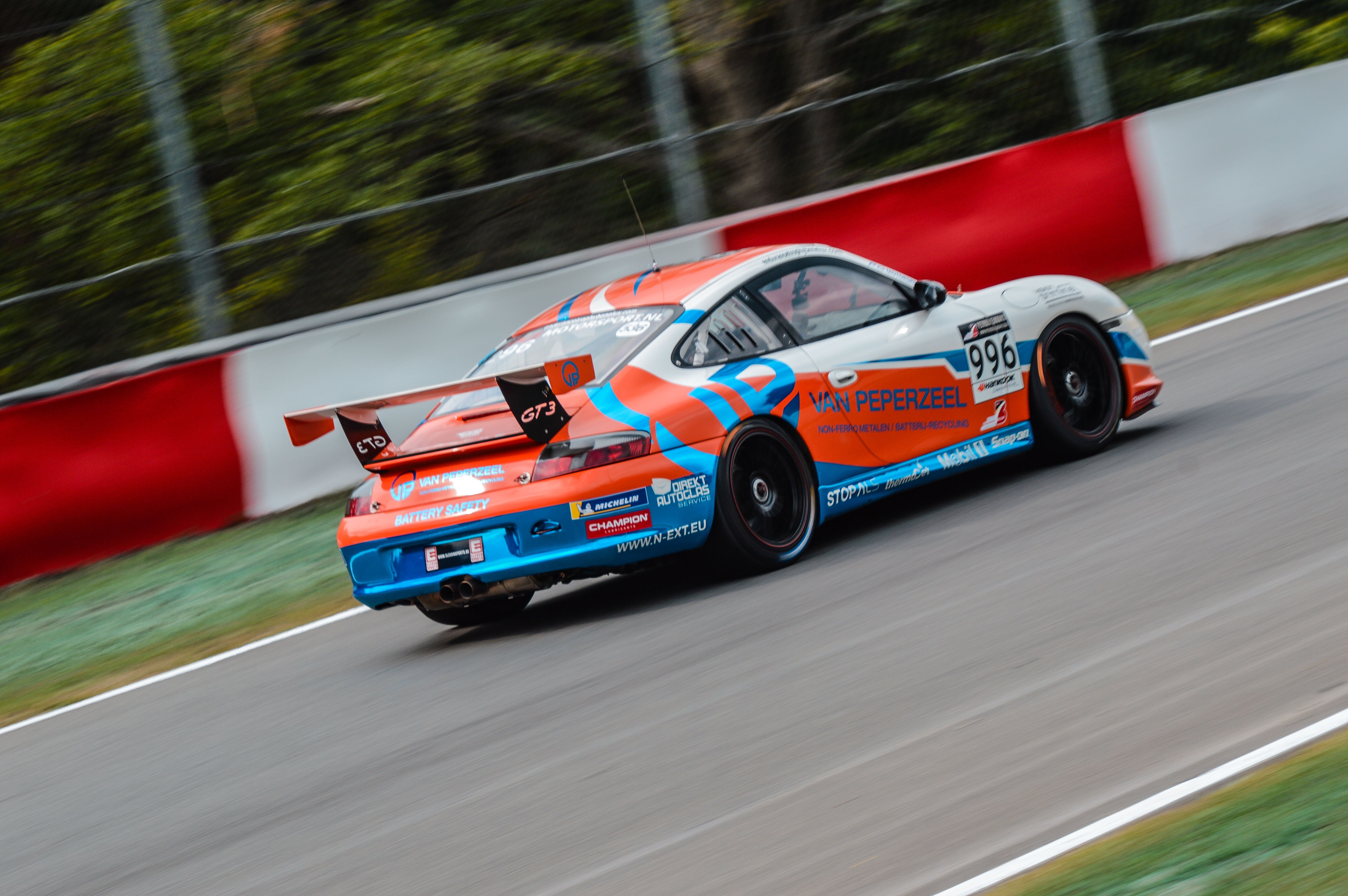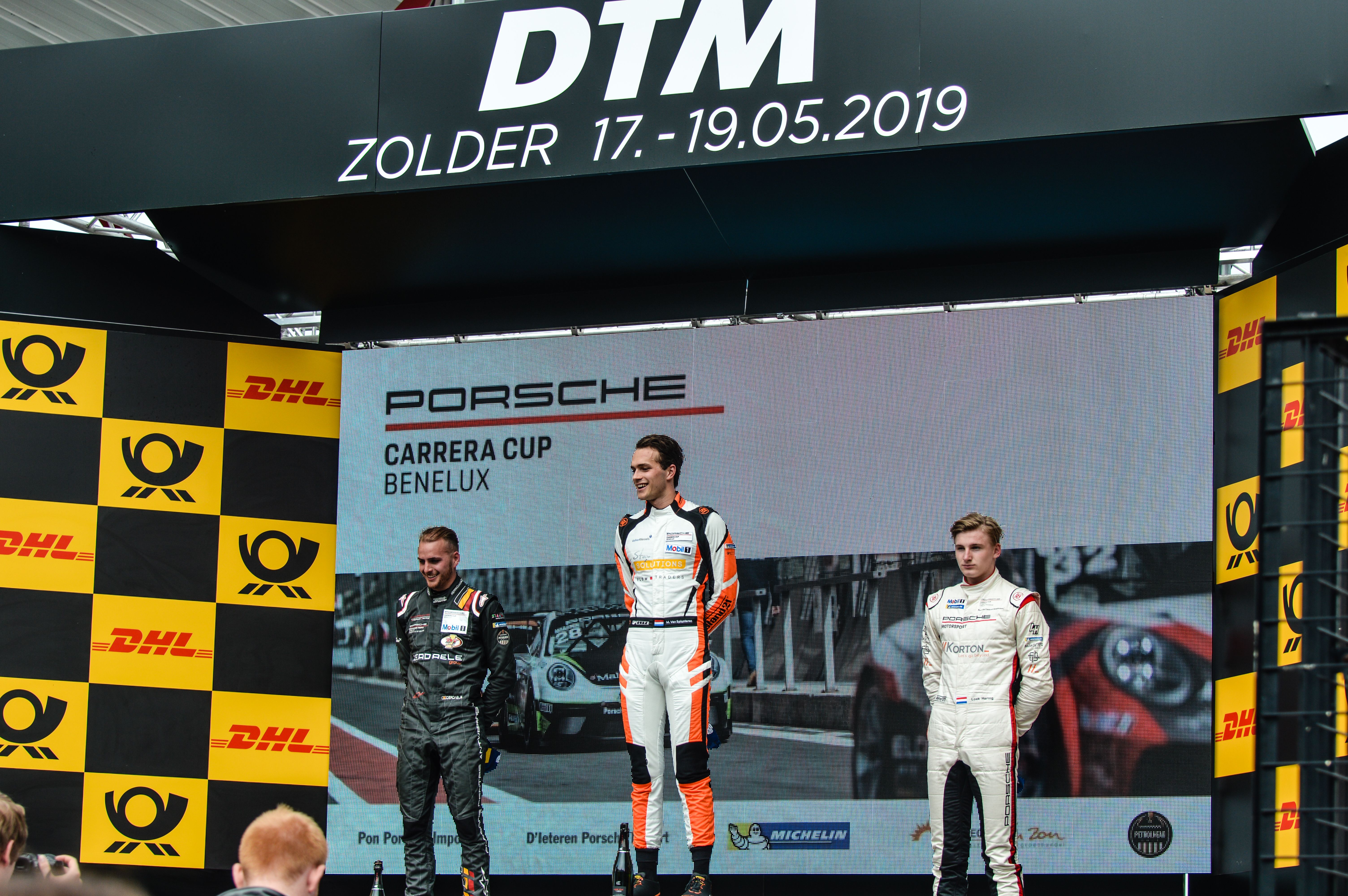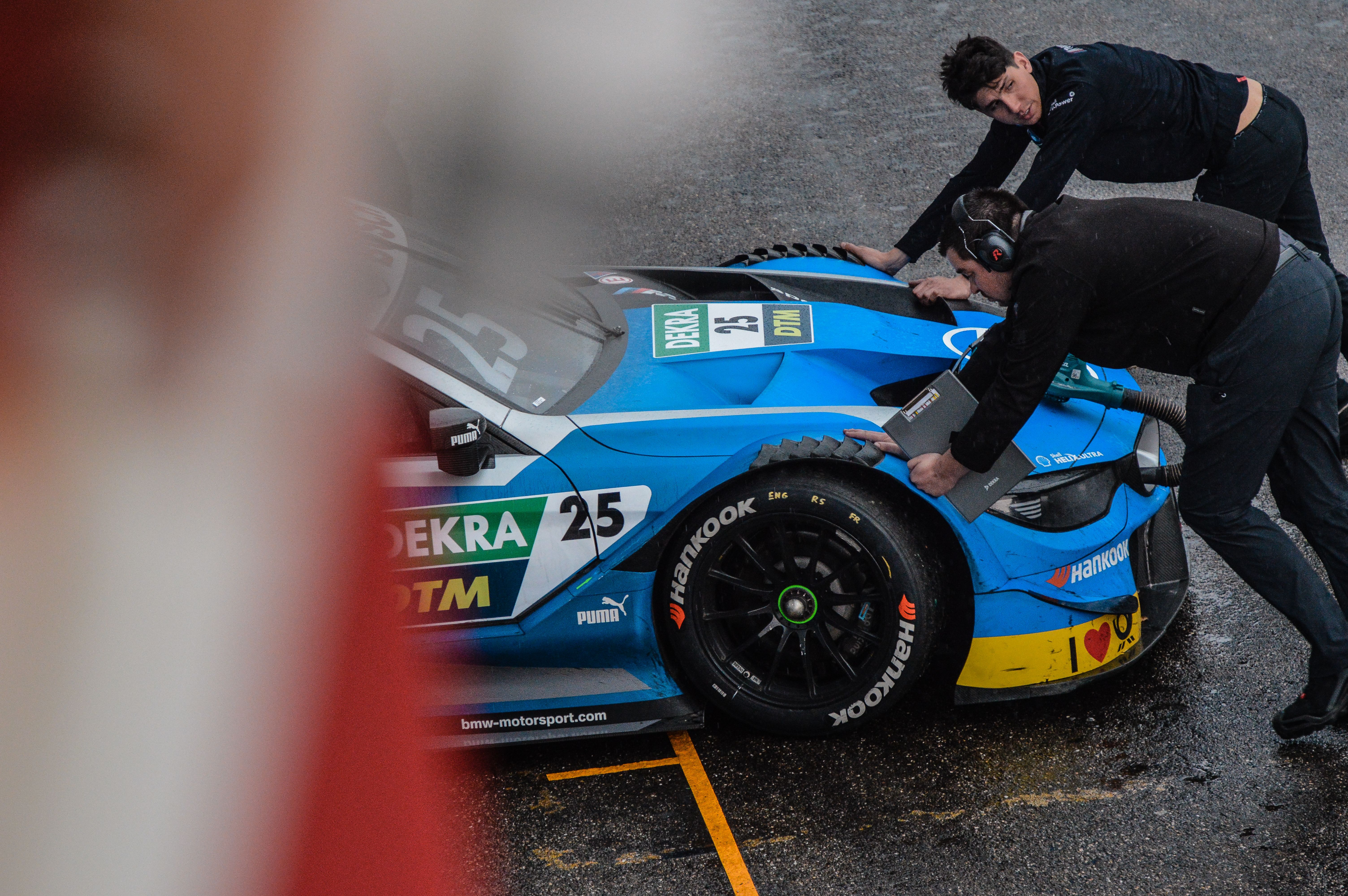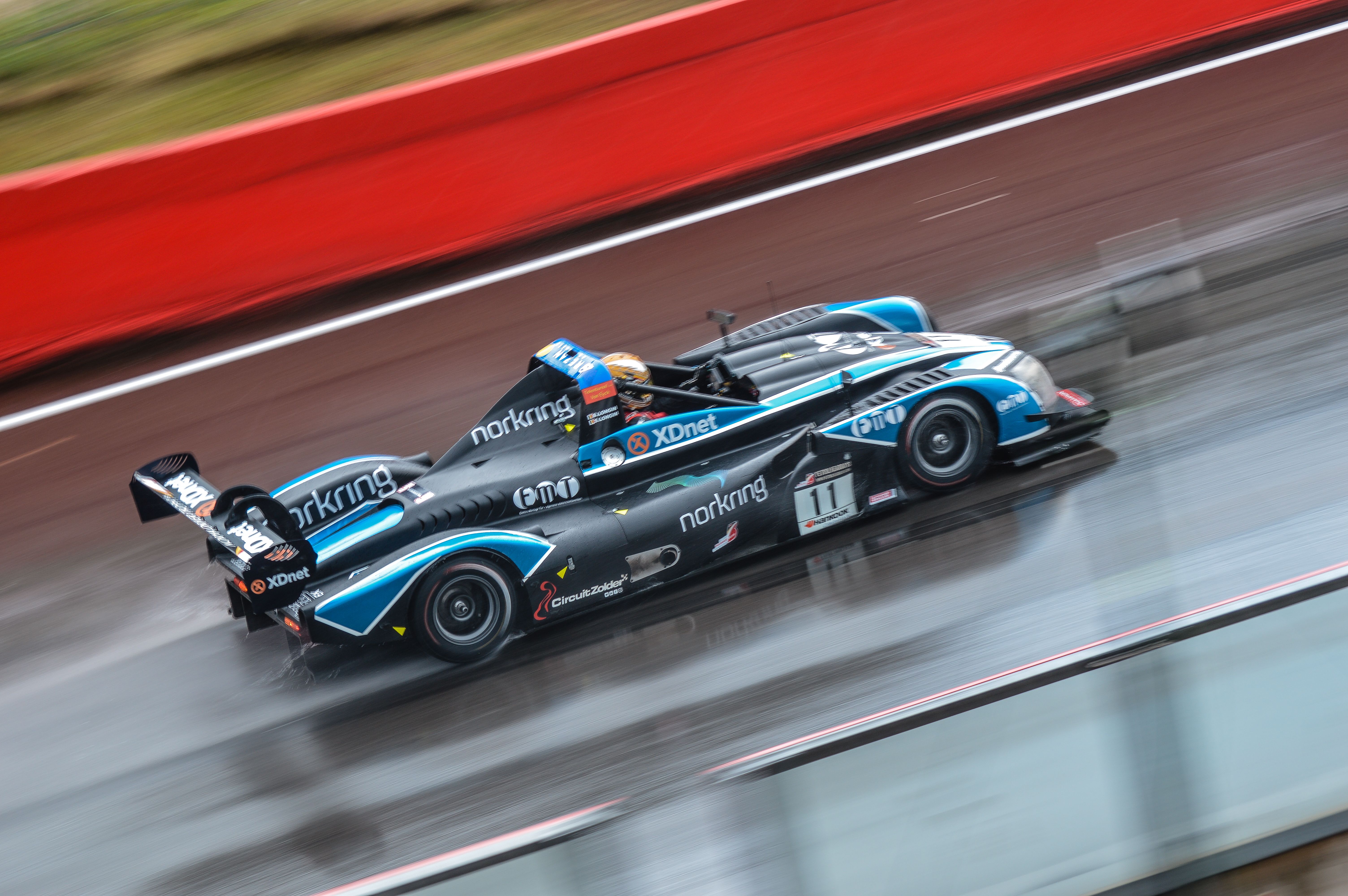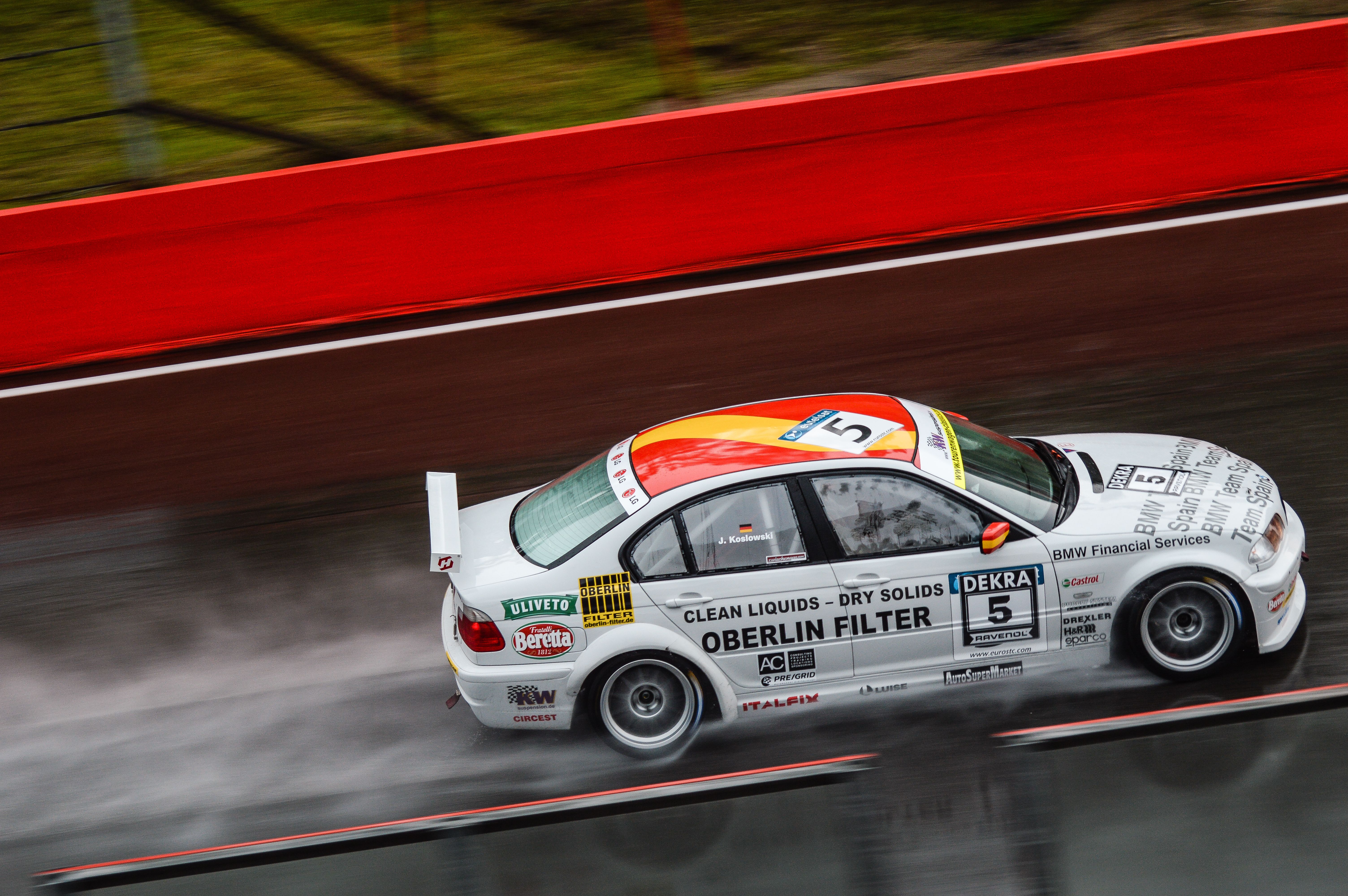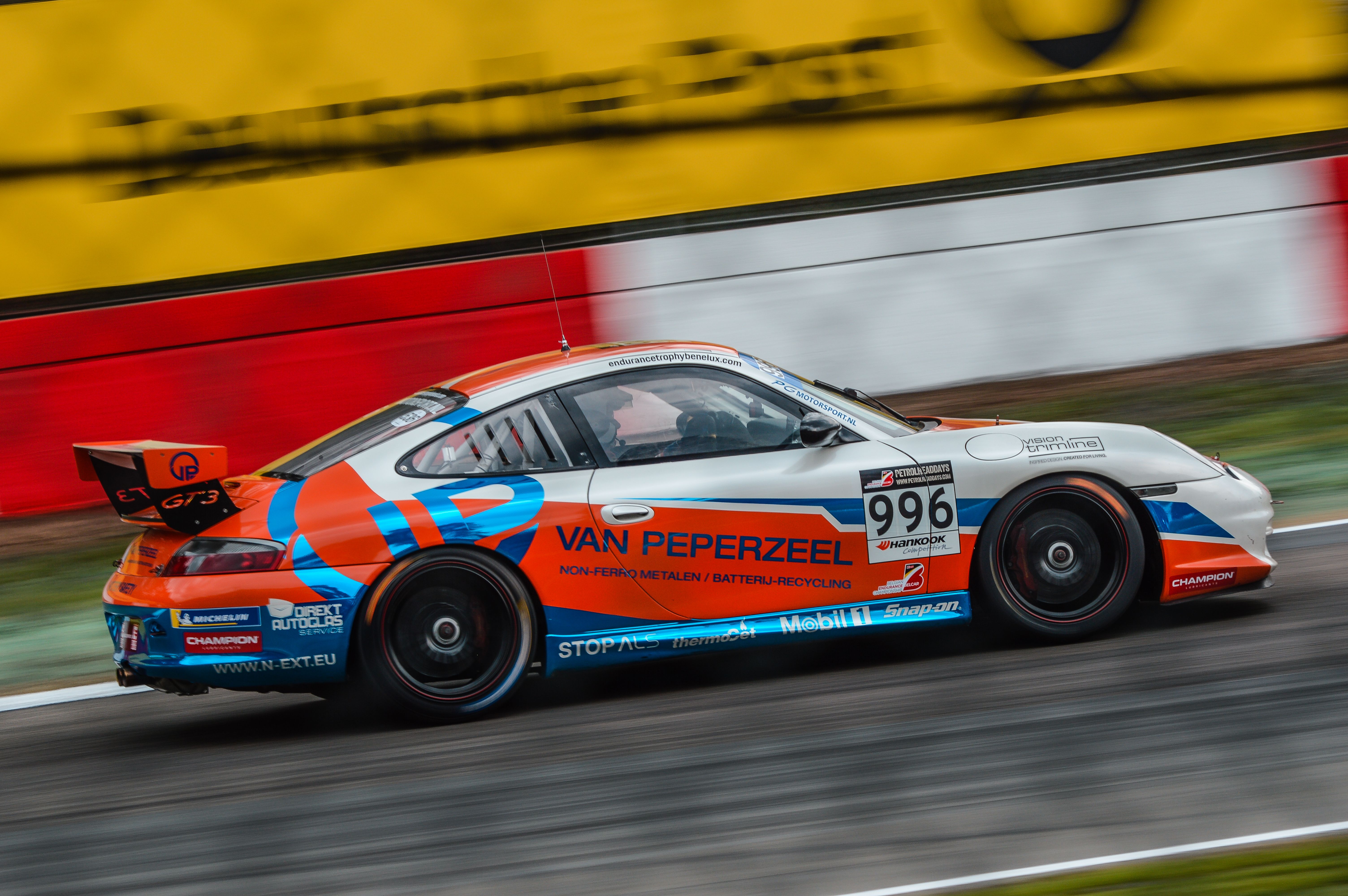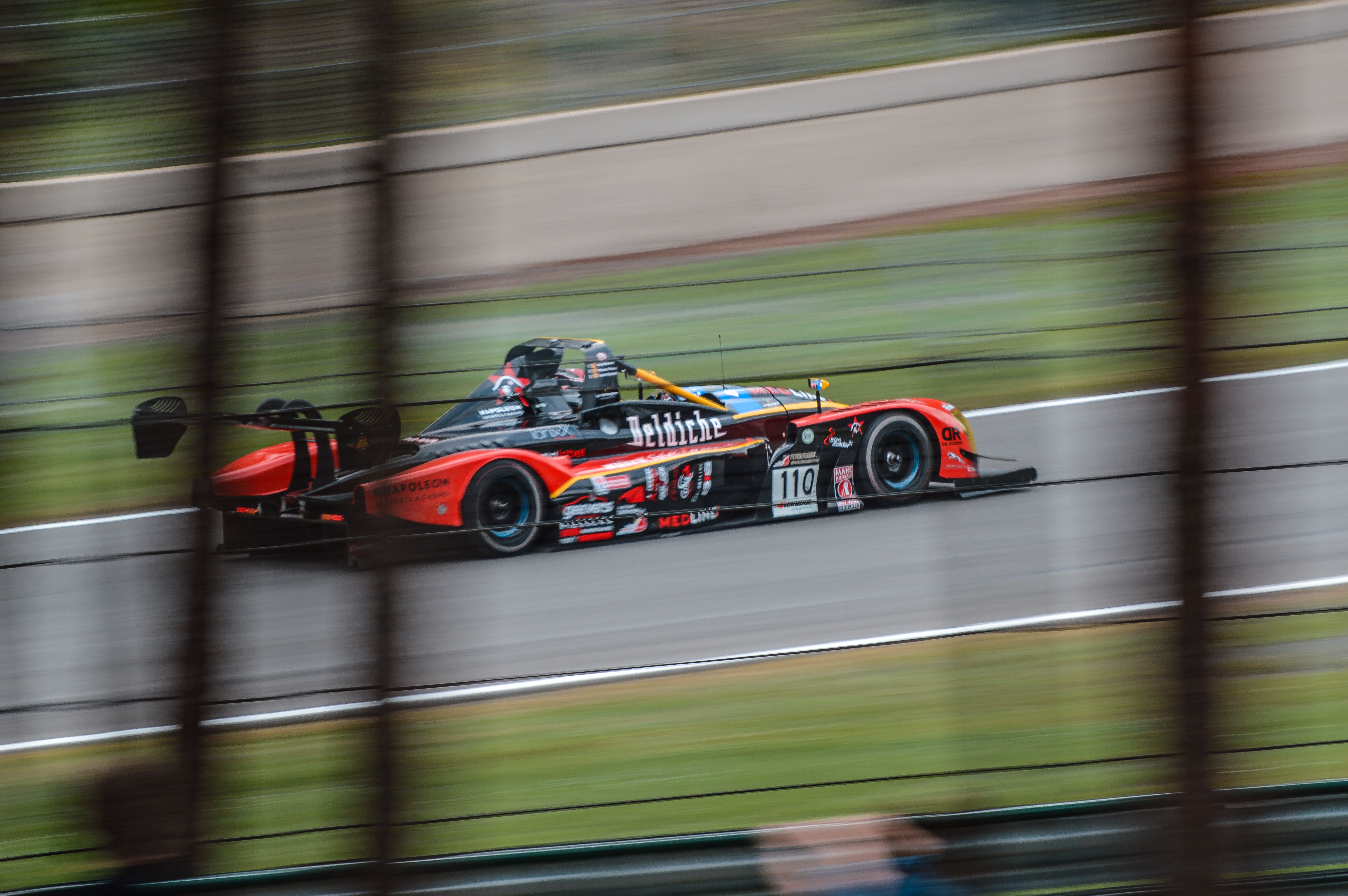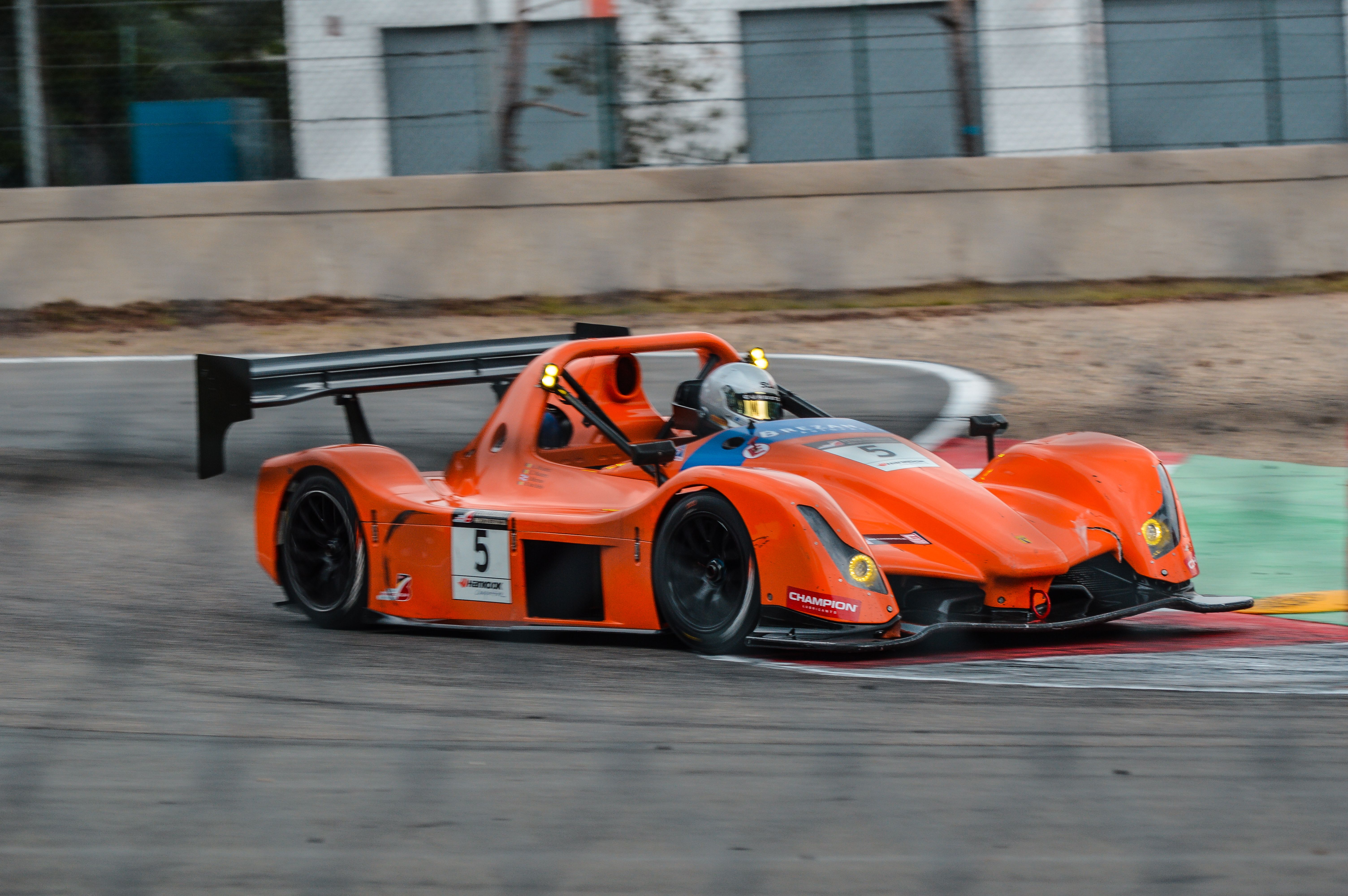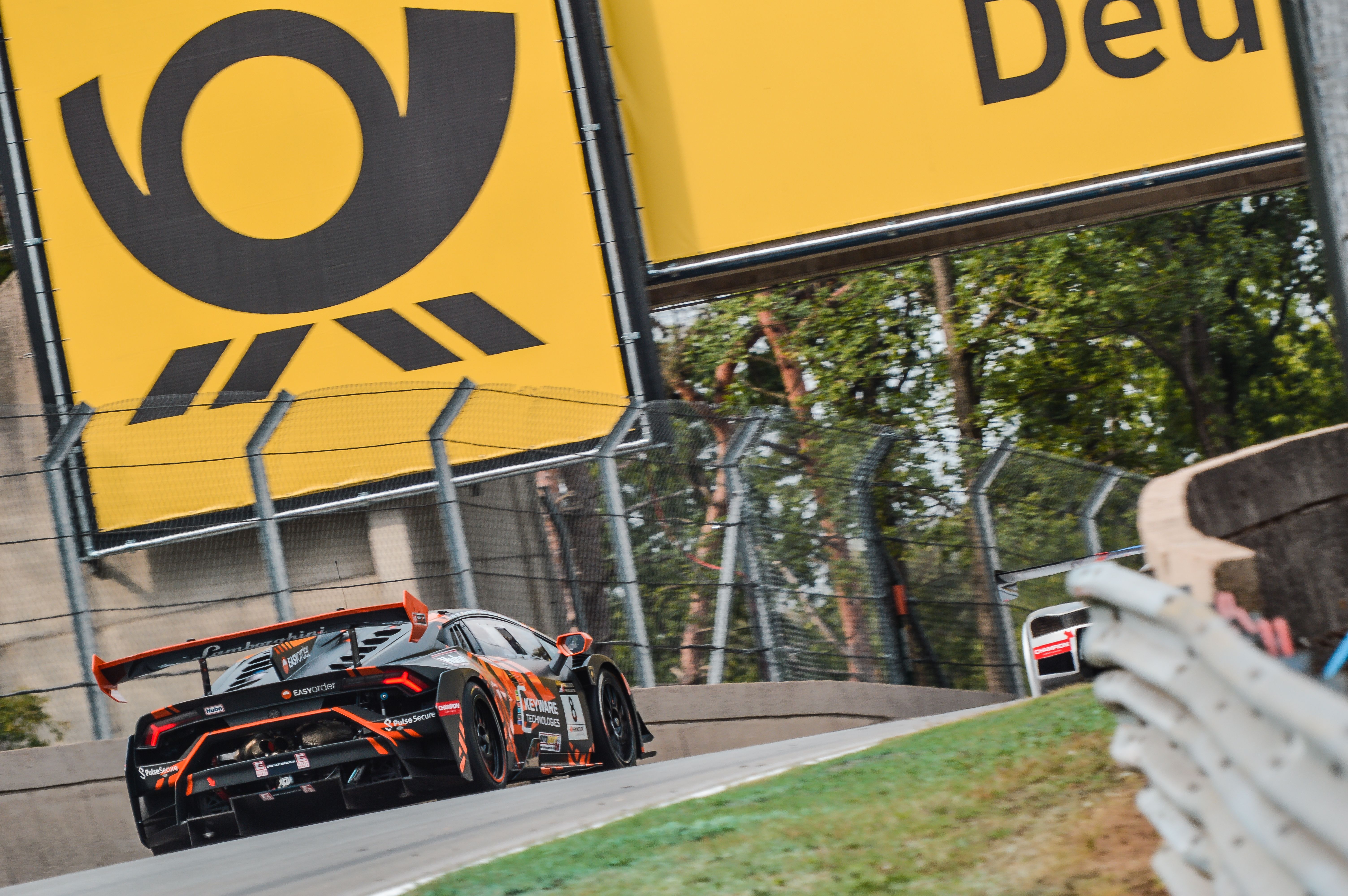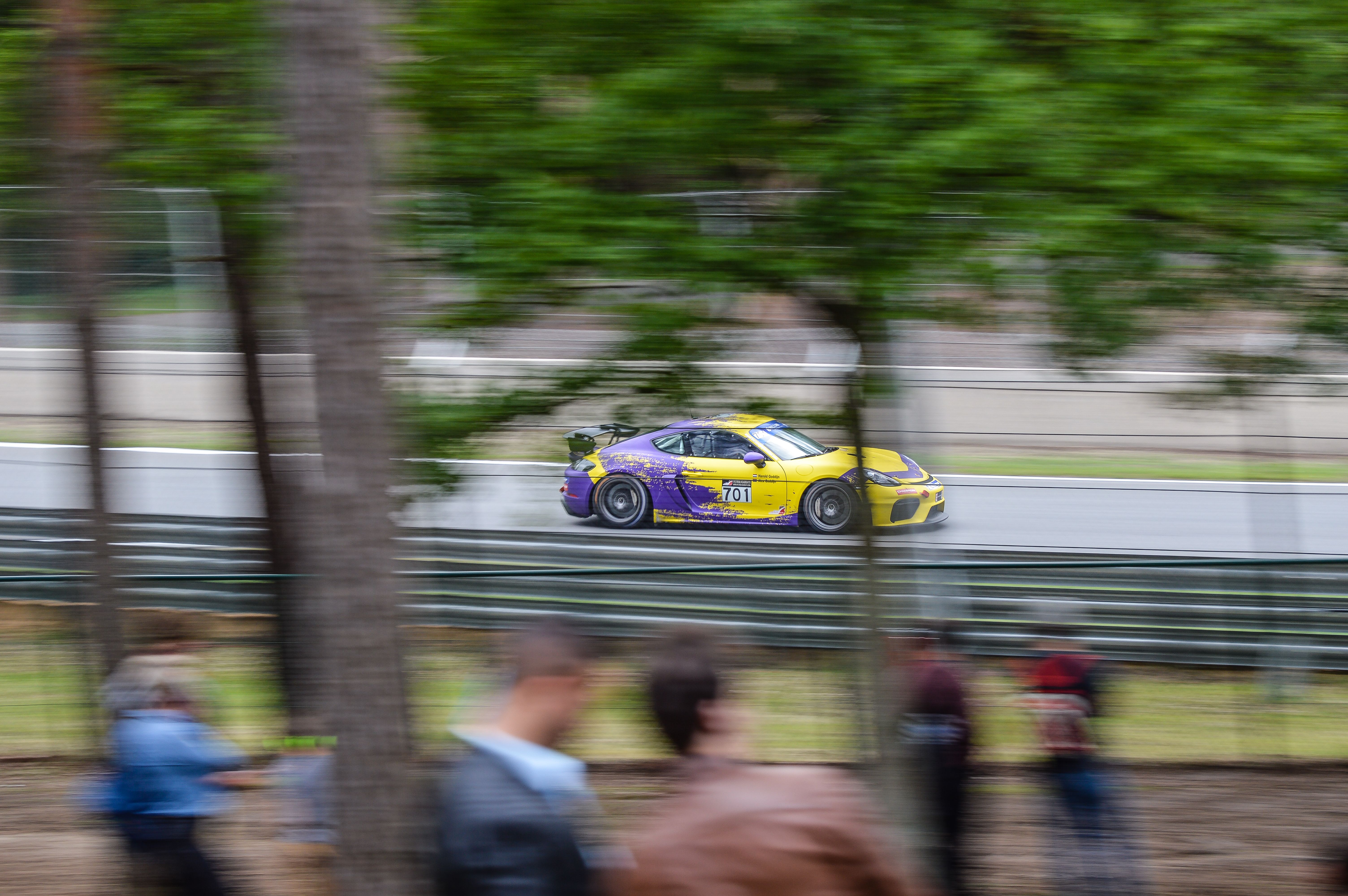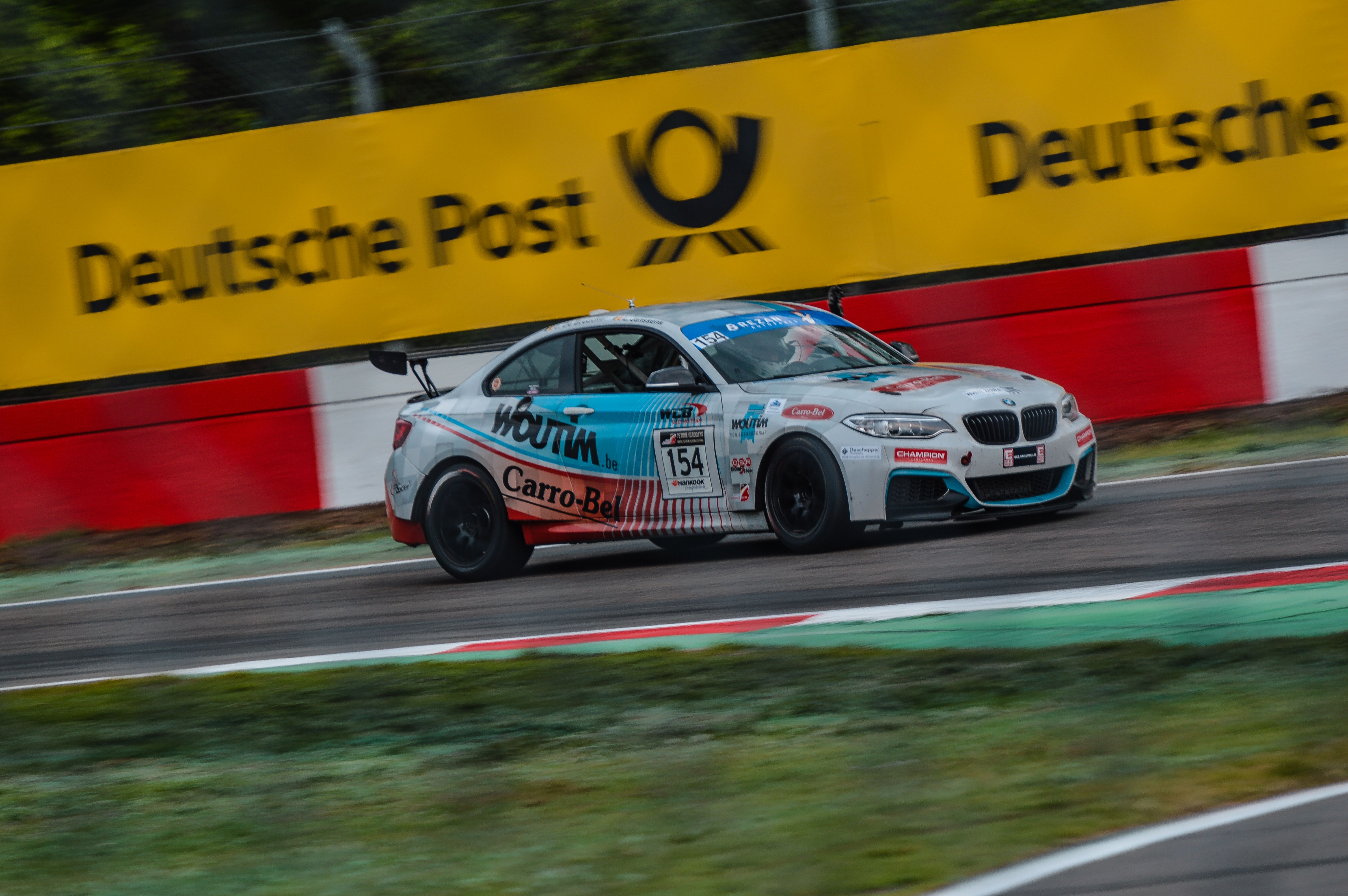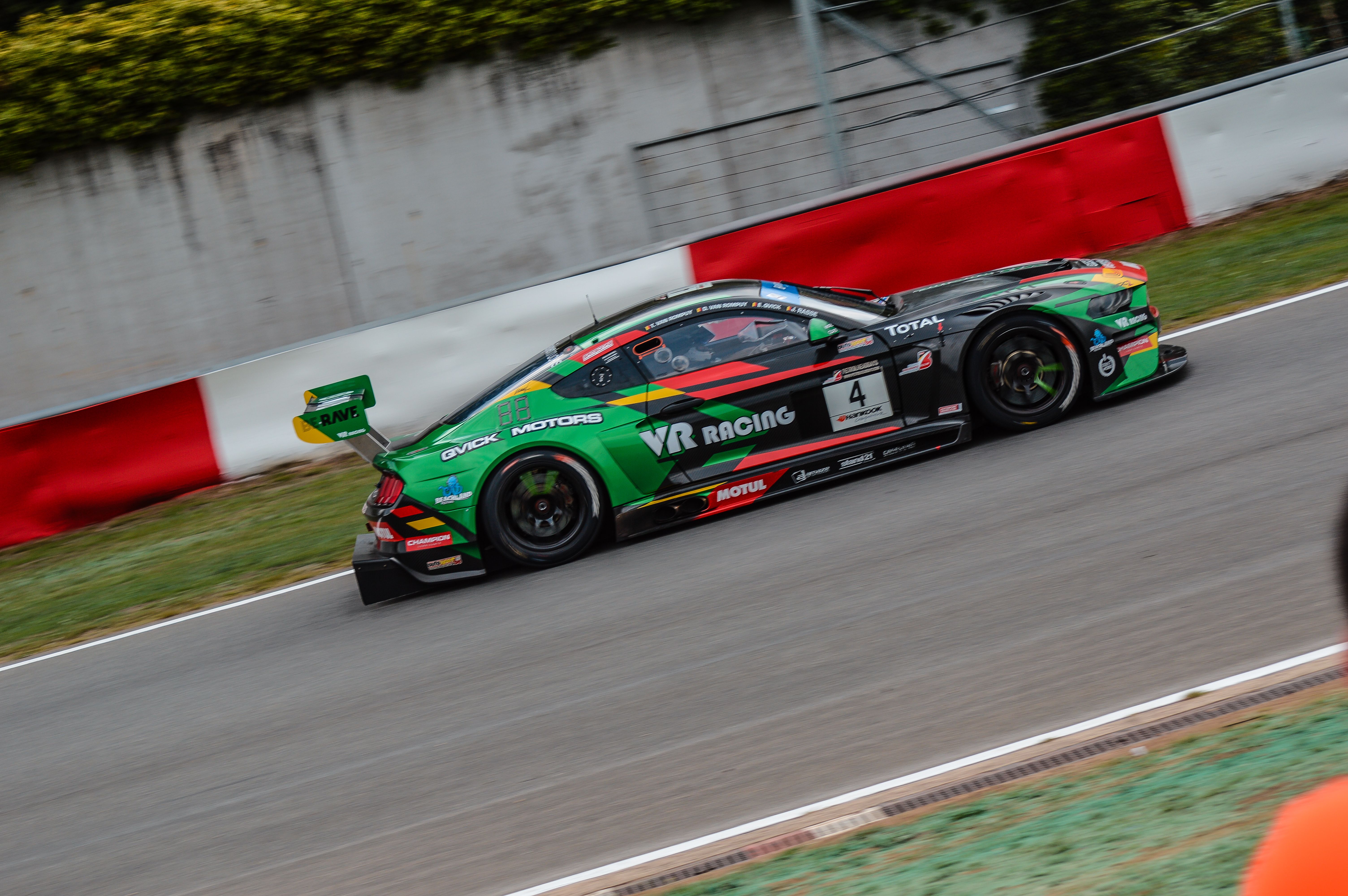The turbocharged madness that is the DTM, or the German Touring Car Championship, returned to its birthplace last weekend when the series staged a race at Zolder, in Belgium, after a 17-year hiatus. Was it worth the wait or was the diminutive track that sits merely one hour away from the more famous Spa-Francorchamps just too small from the pack of angry Audis, BMWs, and Aston Martins? Read on to find out.
When you think about racing in Belgium, you most likely picture the famous Eau Rouge uphill chicane that's the signature bit of the country's current Grand Prix race track, Spa-Francorchamps. But, besides the fact that the section is called Raidillon, Belgium boasts more than one venue that was bestowed with the honor of hosting a Formula 1 Grand Prix. In fact, Zolder, the track I headed for last Friday, hosted the Belgian Grand Prix every year between 1973 and 1984 with the exception of the 1974 edition, when the Grand Prix was moved to Nivelles, and the 1983 edition when competitors dipped their toes in the water at Spa which would become the permanent home of the race from 1985 onwards.
So, it's fair to say that this little, 2.49-mile long track located in the province of Limburg near Hasselt, in the town of Heusden-Zolder doesn't deserve the apparent shroud of anonymity that seems to cover the premises. You see, this is a track with its own 24-hour endurance race, a track that has routinely hosted the NASCAR European Series, the FIA European Truck Racing Championship, the FIA GT Series and even the Champ Car World Series 12 years ago. But, just as worthy of a mention is that here, on this tight circuit that features three chicanes and almost no passing opportunities, is where the first DTM race took place on March, 11th 1984.
The allure of watching an animal outside of its natural habitat
Have you noticed that viral videos involving wild animals (be it a zebra, a tiger, or a gorilla) always seem to involve said animals running amok on a bustling street downtown or ravaging some unfortunate soul's house or simply causing havoc away from where it should be which is in the wilderness?
However, chaos wasn't on the menu in either of the two one-hour races part of the second round of the season. There was some rubbing and some people's races ended by the wayside but, as we all know, rubbing is racing and, since the series still includes the phrase 'touring car' in it, it goes without saying that tin top racing without the occasional fender-bender is like the typical Belgian french fries without mayonnaise - rest assured, I'll get to the mouth-watering foody bit soon.
What's the DTM?
If you were in Germany in the '70s and wanted to go sedan racing at the top level, the DRM was the place for you. Known in German as the 'Deutsche Rennsport Meisterschaft' or, in English, the 'German Racing Championship,' it was a series that evolved from the grassroots level with mildly prepared sedans all the way to the stratosphere with multi-million-dollar prototypes built to comply with Group C regulations in the early '80s. Basically, in just two decades, the DRM became one of Europe's top national racing series as it grew and became more and more liberal, first allowing GT racing cars (from 1974 onwards), and then welcoming even the ludicrous Group 5 silhouette sports cars that dominated up until 1982 when Group C began its reign.
This alternative was called the 'DTM' or 'Deutsche Tourenwagen Meisterschaft' in German. The 'German Touring Car Championship' as you'd find it written in English was born after the Germans saw the French convoy participating in the Supertourisme series land in Germany for a support race in 1983 before the German Grand Prix. For its first two seasons, though, the series was known as the 'Deutsche Produktionswagen Meisterschaft' or the 'German Production Car Championship'. Currently, the series is known as the 'Deutsche Tourenwagen Masters' which is the name that was adopted when the series was brought back to life in 2000.
Now, you may be wondering what happened to the DTM that required it to be brought back from the dead. Well, it's quite simple. When the DTM (or DPM, to be properly pedantic) was introduced, as a replacement for both the Racing Trophy (Rennsport Trophae) back in 1984, it was aimed at Group A cars (think BMW 635CSi or the BMW M3 E30) which had replaced Group 2 cars in European sedan racing for two years by that time. These cars were much closer to their road-going counterparts since they lacked any sort of aerodynamic enhancements (although they'd later arrive but also had to be homologated via a street-going 'homologation special' like BMW's M3 Sport Evo).
The catch was there for everybody to see: Class 1 cars were big, aggressive, fast, loud, and would spit flames in the braking zones for just about any corner but they were also more expensive than anything that came before them. As such, the remaining trifecta of Mercedes-Benz, Alfa Romeo, and Opel called it quits after one last hurrah, the Bernie Ecclestone-organized ITC of 1996 which was, in essence, the DRM that went on a world tour as the 'International Touring Car Cup.' After that, everybody refocused on Germany's own super touring-based series that'd been going on for a little while without anybody noticing since all eyes were on the DTM.
When the DTM was reorganized and brought back into actuality in 2000, it featured largely similar cars in philosophy to those from the Class 1 days: silhouette racers that resembled their production counterparts but sported bespoke monocoques and extensively updated aerodynamic packages. At first, it was Audi, Mercedes-Benz, and Opel who took part and Zolder found its way onto the calendar only once back then, in 2002.
At the time, the DTM was considered to be sort of a retirement home for former Formula 1 drivers as the likes of Jean Alesi, Mika Hakkinen, Heinz-Harald Frentzen, Ralf Schumacher, and David Coulthard all competed in the series in the noughties when they were past their prime. More recently, other F1 ex-pats have competed in DTM and some - like ex-Williams F1 driver Paul Di Resta or Timo Glock - are still on the grid today. The series was also seen as uninteresting after 2005 when Opel decided to withdraw after a string of about half a dozen years when the brand finished behind arch-rivals Mercedes-Benz and Audi. Then, in 2012, BMW returned to the series to make it a three-horse race once again. BMW had last competed in the series in official quantity prior to the Class 1 days. More recently, at the end of 2017, Mercedes-Benz announced that 2018 would be its last season in DTM as the Stuttgart-based giant would instead focus its flow of cash in the direction of the very fashionable Formula E championship.
Zolder is no Spa, but it doesn't try to be
Zolder, also known as Circuit Terlamen, opened its doors in 1963. In the space of just a decade, the track went from hosting rounds of various Belgian and Benelux-based series to hosting the Belgian Grand Prix. That year, Jackie Stewart won on his way to the title, but it was his younger team-mate, the late Francois Cevert, who recorded the fastest lap in practice. The 1973 Belgian Grand Prix was also the race that first saw Niki Lauda finish in the points in his F1 career.
With Spa sidelined from F1 after drivers protested during the 1970 edition of the Belgian Grand Prix, the last to run on the original 6.2-mile road course, Zolder seemed to have a rather safe spot on the calendar. That is until 1982 when the by-then unhinged rivalry between Ferrari's Didier Pironi and Gilles Villeneuve led Villeneuve to hastily judge an overtake on the slower March of Jochen Mass which, in turn, led to the crash that claimed the Canadian's life. Nowadays, there's a small monument dedicated to Gilles right next to one of the gates that lead you onto pitlane from the paddock. The tragic event suddenly saw organizers vying for a return to Spa.
Zolder remained no less busy throughout the '80s and '90s as it was still in demand. As I mentioned, many national and international series stopped by throughout the years, and one of them was the DTM that, for its opening season, strayed from what would become the norm - namely to kick-off the season at Hockenheim - and chose Zolder as its season-opening venue.
That weekend, the weather did its best to impede the contestants. The 28 cars that showed up had to fight both the crippling early Spring cold and whatever dropped from the cloudbed above. Sometimes, it was water that arrived in showers but, on Saturday, snow was also on the menu. As many teams hurried to get their cars ready, it was BMW and Rover that fought for the pole. Joerg van Ommen was the fastest over one lap of the track in one of Rover Deutschland's cars while Hans-Joachim Stuck was second in a Jagermeister-liveried BMW 635CSi.
With two laps left to go, a wheel decided to take life in its own hands and promptly left Stuck's wagon which, left with three wheels, could continue no more. Ready to grab the victory right from under Stuck's nose was Harald Grohs, a man who'd been racing BMWs for over a decade by that point. Grohs kept it on the island and won the race ahead of the identical BMWs of Udo Schneider, Volker Strycek (the soon-to-be Driver's Champion), and Prince Leopold von Bayern of Bavaria. Oh, and, for the record, there was always some American presence in the DTM too. A number of Foxbody Mustangs always seem to be entered (although Gerd Ruch's car was the one that received all the attention in the early '90s due to it following the trend of the ludicrous aero packages) and, in 1984, Serge Power campaigned a Camaro Z/28 that put out 363 horsepower from its 5.8-liter V-8.
Grohs was asked about that maiden DTM last weekend, but he proved quite reserved.
What went down
For 2019, the apparently ageless naturally aspirated V-8 engines that have been around, in one way or another, ever since the series was reborn have been replaced by more efficient, production-based, 2.0-liter, four-cylinder, turbocharged engines that ought to last at least 3,728 miles before needing to be replaced. This makes the new units more expensive as the old V-8s were officially able to go for over 6,000 miles before the teams needed to swap them. But, beyond the new engines and the return to turbocharging for the first time in 32 years, the biggest news was the track itself.
"The circuit is uncharted territory for all contestants, so nobody is able to rely on existing data," said prior to the weekend Florian Kamelger, Team Principal of R-Motorsport, the Swiss team supported by Arden that runs the Aston Martin DTM cars. "None of us can really judge what it will be like to drive a DTM car at Zolder,” stated 2017 DTM Champion Rene Rast who also called it a "trip into the unknown." Robin Frijns, also an Audi driver, even tried to be poetic about it, calling Zolder the "mini-Nordschleife," while over at BMW spirits were high in the days before the cars arrived at the track.
Of course, as is the case with any race weekend, the DTM wasn't the only series present on site. Filling up the bill were no less than four other championships. The biggest of them was the Belcar Endurance Championship, Belgium's well-known long-distance series that's been around for over two decades that was set to fill Zolder to the brim with 50 cars present on the entry list scattered across six different classes. Then there was also the new W Racing Series, a single-seater championship aimed at female racing drivers only, the Porsche Carrera Cup Benelux, and the Historic Touring Car Series where you could see some of the cars from the DTM's storied past.
I arrived in Belgium on Friday and, since natural light was still aplenty, we decided to head straight for the track, which was an hour and a bit away from the airport via the highway. Granted, the Belgian highway system is friendly even at night since they've got lighting on every last inch of their network. Once at the track, I couldn't help but get some serious Monza flashbacks due to the surroundings. For those that haven't been to Italy's 'Temple of Speed,' all you need to know is that the track is located in the heart of a gigantic park with wide alleys guarded by tall trees. It's incredible to think that this park is so big it acts like a sound-deadening barrier since you can barely hear the engines roar when you are at the edge of the park itself.
Now, you don't have a park that big at Zolder but the track is lined by plenty of trees and also some houses that must be owned by some hardcore race fans since they'd probably gotten the track closed up by now if they were firmly against the nuisance that is loud car engines - to those that don't get it, that is.
The atmosphere at the track was peaceful with not much activity going on by the time we arrived. All of the day's on-track sessions had already ended, and mechanics were busy in their tents (or the pit building for the lucky few working on the DTM cars) preparing the cars for the ensuing races. I traveled to Belgium both because I simply enjoy being trackside and I try to attend as many races as I can - call it my main addiction if you will - but also because we had a countryman of ours competing in the Belcar races aboard a Saker RAPX sports car entered by VGL Racing. The Saker is a Dutch mid-engine car akin to a baby Group C machine that can be fitted with a variety of engine and gearbox combinations. VGL Racing's example sports a 385 horsepower 2.0-liter unit of Subaru origin that has to urge onwards the 1,984 pounds-worth of space-framed car.
A walk through the paddock revealed lots of goodies: from the cars entered in the Historic Touring Car Series to BMW's trifecta of 'Race Taxis.' These were racing cars that were supposed to be driven around the track by professional drivers with lucky passengers on their right. >
The evening waddle through the paddock also allowed me to look around for future photo spots. Zolder is lined with one tall fence all around and, besides that, a secondary, shorter, fence for the fans to stay behind of. This time around, I'd be stationed at all times behind the second fence. Originally, I'd planned to get in via a press accreditation, but once that possibility was off the table, I was forced to shoot from the spectator areas all weekend long. In hindsight, this might've been better since it pushed me to get a bit more creative as I was always further away from the action, and with much more stuff blocking my line of view at times than I would've wanted.
The day ended with a stop for mandatory refueling for us, the living and breathing squishy things, at a nearby fast food place since most other restaurants were either already closed or no longer served food. We were lucky not to be rained on at all on Friday, and the forecast was already getting us excited for a day in the sun on Saturday.
Indeed, sun was aplenty on the first day of proper on-track action. The first order of the day was the autograph session for the Belcar drivers or, at least, the few that bothered to show up near the stage where, later that weekend, one Bob Sinclar was up performing. But I wasn't there for the music or the dancing; I was there for the smell, sound, and sight of fast cars.
Due to the size of the track and the lack of straight bits of road (you only really have three straights, but two of them are really short), most of the passing was going to happen under braking for Turn 1. But, even there, you had to have full confidence in the reactions of the guy you plan to overtake since it's easy for contact to happen if one turns in on the other as the apex is targeted by both cars. With this being said, the weekend didn't turn into a crash fest, but there were a few mirrors that got detached, a few spins, and a few unfortunate one-on-one meetings with the Armco barriers - nothing serious though.
I'm only fluent in English, and I tend to speak French only when I want to laugh at my sorry state when it comes to the grasp on a language that I studied continuously through middle school and all four years of high school. Apparently, all of that was nowhere near enough to help me get off the ground in French. Luckily, the people there don't really speak French. Zolder is located in the Flemish half of Belgium (a language that's sort of a mish-mash between Dutch and German), so you're better off just speaking English, to begin with. Besides food, there were also countless vendors trying to sell you all kinds of motorsports-related merchandise: shirts, jackets, model cars, flags, caps, everything was on hand, and everything was appropriately overpriced and ready for compulsive buyers.
All the walking (it takes a while to get from one end of the paddock to the other if you don't come equipped with a motorized scooter or at least a bicycle) and eating effortlessly ate up the break between the DTM race and the Belcar race and so I had just enough time to get myself on the right side of the straight that leads you from the first chicane, over the brow of the hill, and down again through Turn 6 and then right smack within touching distance of the second chicane. Zolder is a track that's tough on brakes with so many slow bits, and it's also tough on tires because of the abrasive surface while suspension components take a beating too with all the curbs that you ought to clatter in the search of the last few tenths.
From that hill that leads into Turn 6, you can walk around the outside of the track past the second chicane (also known as the Villeneuve chicane as that's where the crash occurred), around the double right-hander, and all the way towards the back of the track where there's a hairpin that leads you to the short straight which ends with the final chicane. While shooting from these spectator areas on the outside of the track you've got to remember that the fences lining the track are quite high and, most often, you just have to deal with the fact that it'll be an integral part of your pictures or videos. The one-hour-long Belcar race was interrupted by a few safety car periods, one caused by the flaming crash of one of the two Ginetta G55 GT4s present. Luckily, the car wasn't structurally affected, and it was again in one piece before race two commenced. A safety car during the DTM race on Saturday was responsible for shuffling the order, 2012 champion Bruno Spengler being at the losing end of it while fellow BMW driver Philipp Eng emerged as the victor. This was Eng's first DTM win on a track that he actually knows having driven at Zolder last time in 2017 in a BMW M6 GT3.
Sunday started out equally positive although, soon enough, the skies started to get ominously grey. Ignoring the clouds gathering up above, I hurried to the same area from where I shot the first Belcar race and proceeded to take snaps of the DTM cars going at speed through the second sector of the track, their diffusers and splitters throwing sparks up in the air as the cars bottomed out in places. The bad weather stayed away for the entirety of the DTM race that was won by Rene Rast who, in the process, avenged his retirement in the first race. But, as the classic sedans rolled onto the start/finish straight for the commencement of the second Historic Touring Car Series race, the skies opened, and it started raining cats and dogs. As it happened, at that very moment I was walking about in the paddock trying to find a table for me to rest and enjoy my hard-earned burger. Obviously, the rain caught me off guard, but I did manage to run to a dryish place before the burger got too moist.
In the end, the race got delayed for minutes on end until the race director decided the weather isn't going to change its mind and we might as well let things follow their natural course and let the show go on - and what a show it was! Seeing roughly a dozen 20-to-30-year-old cars dance on a drenched track is quite something. A few BMW M3 E30s were particularly spirited (one of them in the hands of ex-DTM champ Eric Van De Poele) as was a more recent Mercedes-Benz 190E Evo II that hade made an appearance at the fabled Goodwood Festival of Speed in the past. With this race in the books and the weather showing no signs of improvement, it was decided to bring out the Belcar pack and not stay put any longer after the end of the Historic Touring Car Series race. It must've been particularly dreadful for the drivers aboard the open-top CN-spec prototypes that make up the top class in Belcar. These Norma, Ligier, and Radical sports prototypes are by now mean up to the pace of the things you see in IMSA, the World Endurance Championship or the European Le Mans Series but they are the only open-top prototypes left racing nowadays. I bet those drivers would've wished this wasn't the case but, it must be said, some drivers that did have a fixed roof above their heads also got flooded.
In the end, barring from some spins and off-track excursions early in the running before the skies started to clear up and the track to begin to dry up, there was always enough respect being offered by everyone as the last thing you'd want in a wet race is to aquaplane and bin the car. While the Saker wasn't where it deserved to be (blame some awkward race officiating and an ill-timed red light at the end of pit lane due to a safety car period) at the end, it's experience that VGL Racing collected during the first two outings of the season and experience is key especially when you draft in a new driver that, prior to the races, had only driven the car for a grand total of ten laps. That's a bit like letting loose your mate in your new Porsche after he just drove it a bit around the block.


